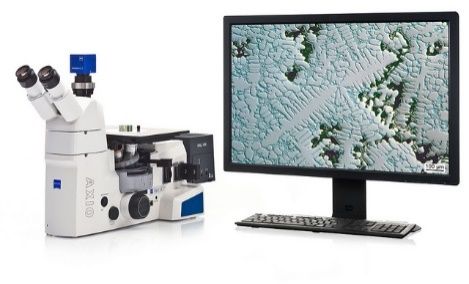5 Ways Technology is Improving Education

The desire to improve education has pushed it to the forefront of national politics in almost every country in the world. There is a constant push to ensure education is easily accessible and affordable to the masses. Additionally, there’s a constant push to make sure the quality of education continues to increase. To meet all these objectives, most nations turn towards technology as a tool that can guarantee equitable access to education as well as a tool for improving the quality of education.
Here are 5 ways IT in education continues to revolutionize the delivery of education and its quality.
Online Learning
Perhaps the biggest revolution in the way education is delivered after the invention of the printing press is the internet. Today, literally thousands of educational courses are delivered over the internet. People can access both paid and free educational content from the comfort of their houses without having to travel to an educational institute.
Through the internet, most of humanity’s knowledge was digitized and brought to the fingertips of billions of people. Today, there’s a shift towards offering academic courses online which then overcomes the traditional obstacles that stood in the way of access to education. Technology in class is fast becoming the go-to technology for overcoming barriers to educational access.
Also, affordable computers for online classes are available online. This means you need not spend on the latest model to jump-start your online learning journey. With a functional computer connected to the internet and its specs compatible with any course’s requirements, you are all set to expand your knowledge about any given field. You can say that technology is a great equalizer.
Introduction of Multimedia Learning
For the better part of the history of education, learners have been exercising learning material as text written on pieces of paper. The text, at times, came with pictures that greatly enhanced the understanding of a large number of learners. However, a growing number of researchers have documented the effectiveness of incorporating both auditory and visual devices in learning materials to greatly facilitate the learning outcomes of students.
Therefore, more and more learning materials are adopting a multimedia learning approach where students receive auditory, visual, and kinesthetic learning experience. The success of this approach was observed in its ability to bring dynamic, longer lasting, and more applicable learning experience outside the classroom.
Improving How Research is Done
Another way technology improves education is restructuring of how research is done. Teaching technology geared toward research makes it easier for scholars to find sources to support their thesis. Gone are the days where scholars had to pour through numerous books to find a citation to back their thesis statement.

Today, search engines make it extremely easy to access thousands of citations and literature to support statements made in scholarly research. Therefore, the majority of academic research completed today are well-founded and informed. It is for this reason that when you hire essays writer to help with your research, you typically get the essay within a short time. Technology makes researching extremely easy and less time intensive.
Digital Simulations and Models
Another way that technology is improving education is through the ability to develop and use digital simulations and models. Students no longer have to have to experiment with say, dangerous chemicals, so as to learn a valuable lesson.
Today, digital models are often used to simulate such chemical reactions, making learning both fun and safe. Moreover, these digital simulations have made it easier for teachers to explain concepts that lie outside the boundaries of a physical classroom. If a teacher wants to demonstrate the workings of an internal combustion engine, there’s no need to get a physical combustion engine. There are working simulation models that allow students to explore every bit of the combustion engine without leaving the classroom.
The existences of such simulation models are especially relevant in technical schools. Traditionally, these schools had to invest considerable resources in securing various educational aids that would help the students learn. However, the emergence of digital simulations means that the schools do not have to commit such vast amounts of resources to acquire the educational aids needed. In turn, students taking technical courses no longer have to pay high fees that would go towards the acquisition of learning aids. For schools, the emergence of digital simulators means that more resources can go towards school improvement projects, further improving education for the masses.
Open Sourcing Education
The phrase open source, a technical term used to refer to technology everyone has a right to use free of charge, has seeped into education circles. Today, there are open-source courses everyone can take without paying a penny. These free educational courses have levelled the field between the poor and the rich.

Traditionally, highly specialized educational courses were the reserve of the rich. Such courses usually came bundled with high tuition fees which barred a significant portion of the population from specialized access education.
Today, however, almost anyone can access specialized academic training including tech education. There’s a push to make other forms of education such as medical training open source. The road to such a realization would require an oversight body to vet the quality of the open sourced education.
The realization of such a platform is not far from realization. Already, there are open source courses aspiring nurses can take. These courses count toward accreditation meaning that academic bodies have accepted the validity and quality of open source courses.
Moreover, educational institutes such as Harvard and the Massachusetts Institution of Technology are open sourcing their educational courses and offering them through various publicly accessible channels such as YouTube and their websites. Today, hundreds of thousands of students have taken these courses, a feat made possible by the adoption of technology in education.

